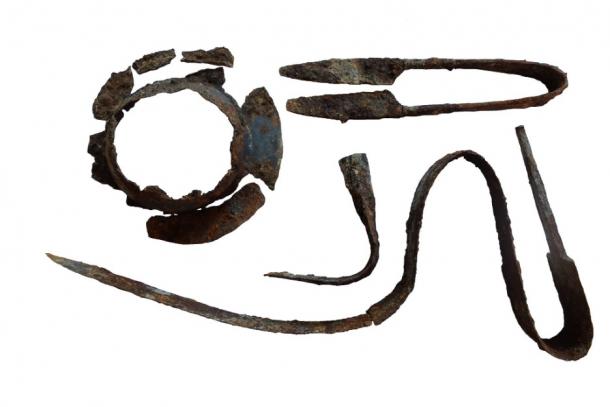The graves of two warriors from the Germanic Vandal tribe have been unearthed in a cemetery in Poland. These warriors, buried with their weapons and artifacts, offer a rare glimpse into the funerary practices of the Vandal tribe during the late Roman period, around the 3rd or 4th century AD. The discovery was made in the village of Glinka, located in the Ćmielów commune, at a previously unknown archaeological site.
A Vandal Cemetery from the Roman Period
The graves, which are believed to belong to the Przeworsk culture, were found in Ostrowiec County, Świętokrzyskie Province in the south of Poland, as part of an ongoing archaeological survey led by Dr. Marek Florek from the Office for the Protection of Monuments in Sandomierz.
The Przeworsk culture, dominant in parts of Central Europe, is closely associated with the Vandals, a Germanic tribe known for their interactions with the Roman Empire. Dr. Florek explained that the cemetery likely dates back to the late Roman period, and it provides valuable insight into the customs of the Vandal warriors who inhabited the area during this time.
“We discovered pit graves containing burnt human remains,” Dr. Florek told PAP (Polish Press Agency).
“The remains, along with the ashes of the funeral pyre, were carefully placed in the graves—a clear indication of the ritualistic practices associated with Vandal burials.”
The warriors were buried with swords, spearheads, and shield elements, including umba, the metal reinforcements for shields.

Vandal military equipment found in Grave 1 of the cemetery. (Voivodeship Office for the Protection of Monuments in Kielce)
Rituals of the Afterlife: The Bent Swords
One of the most striking features of the graves was the discovery of bent swords, a practice known to the Przeworsk culture. Dr. Florek noted that bending or “killing” a weapon before burial was a ritual believed to serve two purposes. First, it allowed the deceased warrior to take the weapon with him to the afterlife, where it would serve him as it had on Earth. Second, bending the weapon made it unusable to others, preventing it from being stolen and repurposed by the living.
“The fire patina visible on all the metal objects suggests that the bodies, along with the weapons, were burned on a pyre before being buried,” Dr. Florek explained. This method of cremation, followed by burial with the charred remains, was a common ritual in Germanic tribes during the late Roman period.

Bent sword and other equipment recovered from Grave 2. (Voivodeship Office for the Protection of Monuments in Kielce)
Further Exploration of the Site
The discovery of the graves is just the beginning of what may be a much larger burial site. Archaeologists believe that the cemetery in Glinka could contain many more graves, and future excavations are planned for the autumn of this year and into the spring of 2025.
According to Dr. Florek, similar cemeteries from the Roman period can contain hundreds of graves. For example, the well-documented cemetery in Chmielów, near Ostrowiec, revealed over 150 graves during previous excavations. “Rarely do such cemeteries consist of only a few graves,” Dr. Florek added, hinting at the potential scale of the burial ground.

At Grave 2 there are visible burnt bones among the equipment. (Voivodeship Office for the Protection of Monuments in Kielce)
Valuable Artifacts to Be Preserved
The artifacts recovered from the graves, including swords, spearheads, shield fragments, and personal items such as iron scissors and burnt clay vessels, will undergo careful preservation and analysis. After restoration, these valuable objects are expected to be displayed at the Castle Museum in Sandomierz, a major cultural institution in the region.
As more graves are uncovered in the coming months, archaeologists hope to further unravel the complex social and military structures of the Vandals and the broader Przeworsk culture.





